- Home »
- Learningcenter »
- What is roof sag
What is Roof Sag and How Much is an Acceptable Amount?
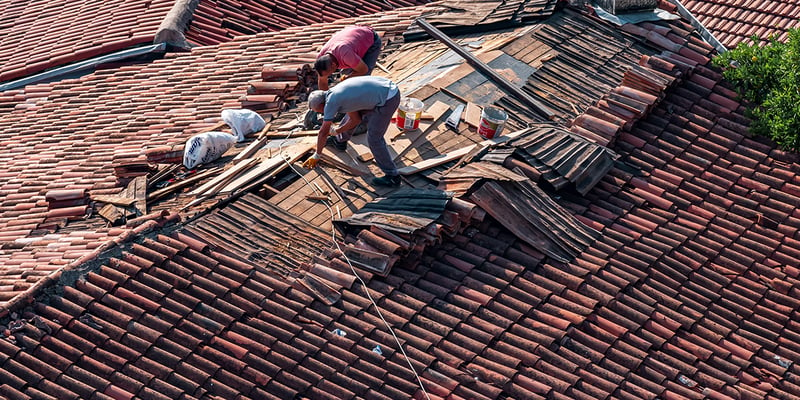
If you’ve noticed that your roof no longer appears to be completely level with straight, flat surfaces, it’s reasonable to feel concerned and have many questions. Is it normal for a roof to sag? What exactly causes roof sag, and how much sag is acceptable?
There are a number of potential causes of roof sag, including water damage, excessive weight on the roof, undersized structural materials, or old age. While a very small amount of roof sag might not mean that you are on the verge of a major and immediate emergency, this doesn’t mean that you should simply ignore the problem.
No matter how small they are right now, structural problems will worsen over time. Not only does this mean that fixing the issue will get more expensive the longer you wait to address it, but it also means that the safety of those in the home and the integrity of the building are increasingly at risk.
What Is Roof Sag?
When your roof was brand new, it was straight as an arrow. These days, though, it has a wavy or curved appearance–a phenomenon known as roof sag.

A sagging roof is not an uncommon roofing problem, particularly in older homes that are overdue for a roof replacement. Don’t let the notion that this is a frequently encountered problem convince you that this isn’t something you need to deal with. No matter how slight the bend or sag you see in your roof is, a sagging roof can get worse over time, meaning that it’s more threatening to the building, the inhabitants, and your wallet.
What Causes a Sagging Roof?
There are a number of different things that can lead to a sagging roof, including age, water damage, too much weight on the roof, or undersized structural materials.
Water Damage
If water isn’t properly draining off your roof, it can lead to rot in your roof decking, compromising your roof’s integrity. Being impervious to water damage is an essential aspect of the structural integrity of your roof, so any vulnerabilities in this regard can ultimately lead to roof sag and other issues.

Improper drainage can occur for a number of reasons– including poorly designed gutters, imperfections in the roof surface, and damaged shingles.
In order to prevent this issue, it’s important to properly maintain your roof over its lifespan. No amount of damage to your roof should be ignored, as it really doesn’t take very long for moisture trapped inside your roofing system to create an environment for mildew, mold growth, and rot.
Too Much Weight on the Roof
Another potential cause of roof sag is having too much weight on your roof. Even if your roof was built to withstand heavy snowfall, excessive snow or ice could threaten the integrity of the structure holding up your roof.

If you know that you are going to be receiving an unusually large amount of snow or you’ve noticed that your roof is sagging under the weight of snow, you’ll want to determine a safe way to remove snow from your roof. You must be cautious when using snow rakes, as they can cause damage and break frozen shingles. If you are at all concerned about your own safety or damaging your roof during snow removal, you shouldn’t hesitate to hire a professional roofing contractor to help you remove ice and snow from your building’s roof.
Undersized Materials or Improper Installation
Sagging can also result from the structural materials of your roofing system being undersized. It might not sound like a big deal, but something as small as using 2x4s instead of 2x6s for rafters can mean your roof isn’t adequately supported. If your roof doesn’t have sufficient bracing or no bracing at all, it means that the walls of the structure are vulnerable to spreading. This can also create roof sag.
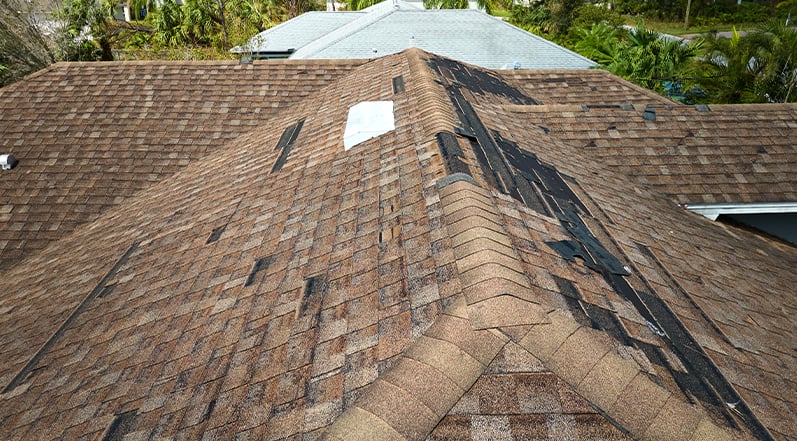
Even if your roofer has all of the right materials, roof sagging can occur when the individuals installing your roof don’t have the skills they need to properly perform the task. For example, your roof can end up sagging much sooner than you might expect if the roof joists or rafters are poorly constructed, poorly installed, or both.
Age
Even if you’ve been meticulously maintaining your roof over the course of its life, all roofs reach their end at some point. As they get nearer to the end of their lifespan, the materials can begin to degrade and lead to sagging.
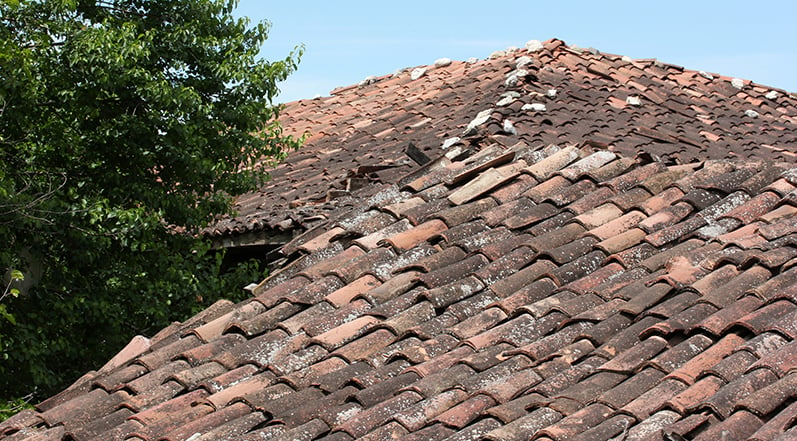
Depending on the material used to construct your roof, the climate you are in, the roof design, and many other factors, roofs can last between fifteen and seventy or more years. If you notice that your roof is sagging and you aren’t sure when it was installed, one of the first things you’ll want to do is look into how old your roof is. Some experts advise that you replace a roof that is sagging when it is more than twenty or thirty years old rather than trying to repair the issue that is leading to sagging.
How Much Roof Sag Is Ok?
The truth is that you really don’t want to have any sag in your roof. The structural integrity of your building might be compromised if your roof is sagging. The sooner you deal with the problem, the less likely you are to face even more costly repairs or even collapse.
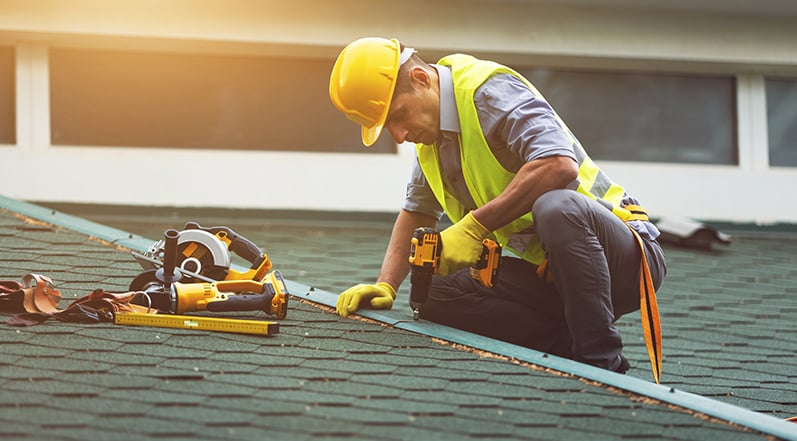
Though having a sagging roof probably isn’t something you’re thrilled about, you ultimately want to deal with the problem as soon as possible. You’ll want to make sure that you avoid any further damage. Depending on the extent of the sag and the cause, it might only mean getting some repairs done, or it might warrant a full roof replacement.
If you notice that there is a small sag in your roof, you might be tempted to ignore the problem because it doesn’t seem like that big of a deal. Even if the amount of sag you have doesn’t put you at imminent risk for a roof collapse, it’s best to assume that any and all structural problems will get worse over time if they aren’t addressed. The cheapest, safest, and least stressful way to deal with a sagging roof is to have it repaired or replaced as soon as possible after you notice the issue.
How to Determine If Your Roof Is Sagging
It can be difficult to see sagging from the ground because of the slope of most roofs.

Here are a few tips to help you get a sense of whether your roof is actually sagging or if it’s just a trick of the eye:
- ● Look at your roof from a distance: It can be easier to see if there is any unevenness or dips in your roofline by standing back and taking a look from a bit of a distance.
- ● Check your gutters: If it looks like your gutters are pulling away from the roofline or sagging, it can potentially be a sign of your roof sagging.
- ● Look for visible deformities: A roof that is sagging can also create visual deformities like dips in your ridgeline.
- ● Check for damage or cracks: You can also look for damage or cracks on the surface of your roof. These can also be an indication that your roof is sagging.
If you suspect that your roof might be sagging, it’s essential to have a roofing contractor come out and take a look. They will be able to evaluate the structure of the roof and determine what is causing the roof sag, how extensive the damage is, and what your options are to fix it.
How to Prevent Roof Sag
A sagging roof is never a good thing– it poses a risk to the safety of the inhabitants and compromises the structural integrity of the roof. There are, luckily, a number of things you can do to prevent the occurrence of roof sagging.
Prevention is the best cure for many things in life, and it’s no different when it comes to roof sag. Here are some of the action steps you can take to ensure that you never have to deal with a sagging roof.
Keep Your Gutters Clean
Your gutters are an absolutely essential part of your roofing system. They are responsible for moving water away from your roof and structure, helping to prevent water damage.

However, if your gutters are full of dirt, leaves, or other debris, they aren’t able to perform their function.
Replace Your Roof When It’s Reached the End of Life
All roofs are going to reach the end of their life at some point, and it’s best to not procrastinate replacing an old roof.

As a roof ages, the materials start to degrade and aren’t able to protect your home or building in the same way they did when they were newly installed.
Avoid Overloading Your Roof
Even though most roofs are built to withstand some additional weight, you want to make sure that you aren’t loading your roof excessively.
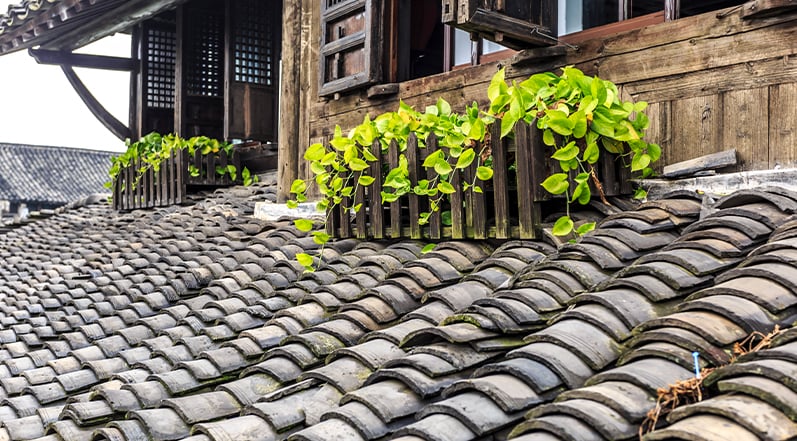
Weight on your roof can come in the form of debris or heavy snow, but that’s not the only thing you want to be concerned with. Additional considerations include heavy materials or equipment on the roof, along with ensuring that any new installations on your roof are structurally supported in the proper ways.
Perform Regular Inspections and Maintenance
When you have regular roof inspections done, it means that potential issues can be identified early before they grow into larger, more expensive problems.
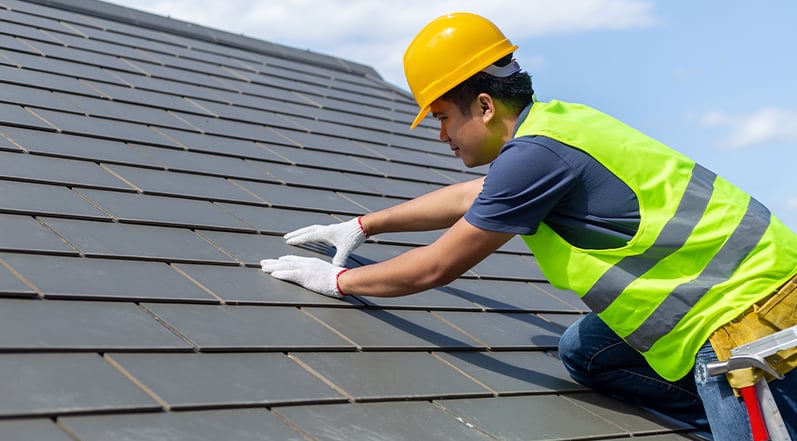
Beyond having your roof inspected, it’s also important to perform regular maintenance, such as ensuring proper drainage and keeping the roof free from debris.
How Is a Sagging Roof Fixed?
The process of fixing a sagging roof depends on the cause, the extent of the damage, and a number of other factors.
In many cases, the rafters or trusses will need to be repaired in order to correct the roof sag. Sagging rafters will need to be replaced and are indicative of structural damage to the roofing system.

If the roof decking is damaged, this will also need to be corrected. Swollen decking will need to be replaced, but beyond that, the cause of the decking swelling up will need to be discovered. There’s possibly a leak in your roof that led to the decking swelling up, but it could also be an insulation or ventilation issue leading to condensation. Identifying the source of the problem is essential; otherwise, replacement decking will end up getting damaged as well.
Does Home Insurance Usually Cover a Sagging Roof?
The cause of your roof sagging will be an important factor in whether or not your homeowner’s insurance policy covers the cost of repairing or replacing your roof. If a sudden accident caused the issue, such as falling objects or a storm, homeowner’s policies will typically cover the cost, or at least part of it.

If your roof sagging has been caused by neglect or old age, though, you probably won’t be successful in your efforts to get the insurance company to pay for it. This is one of the many reasons it is so important to perform regular maintenance on your roof and get it inspected annually.
Is Your Roof Sagging?
Whether your roof needs some repairs to fix roof sag or it’s time for a full replacement, Colony Roofers are your go-to roofing professionals in the Atlanta area. Offering the best of the best in customer service, we specialize in providing the highest quality roofing systems at the most affordable prices. Our team has been hand-selected for their experience, work ethic, and integrity, so you can always rely on Colony Roofers to make your roofing repair or replacement as stress-free and seamless as possible.

Have you noticed that your roof is sagging? Are you wondering whether it’s just a trick of the eye or whether there is potential structural damage to your roofing system? Feel free to contact us today. We’d be happy to give you an estimate and discuss all of the different options you have to ensure that your roof is providing superior protection to you, your family, and your home.
 Call (678) 365-3138
Call (678) 365-3138



